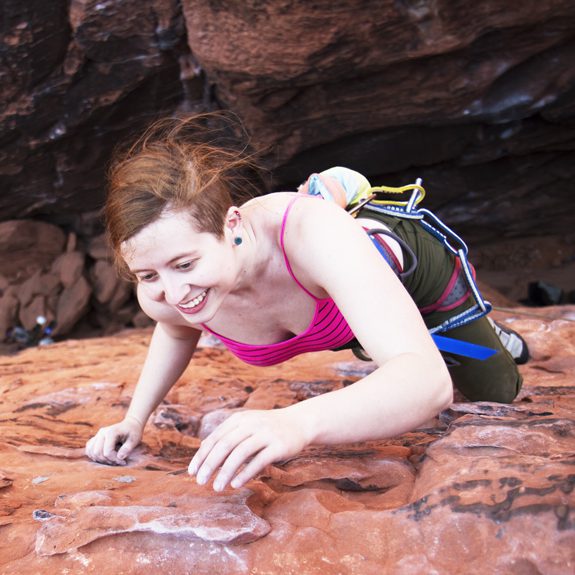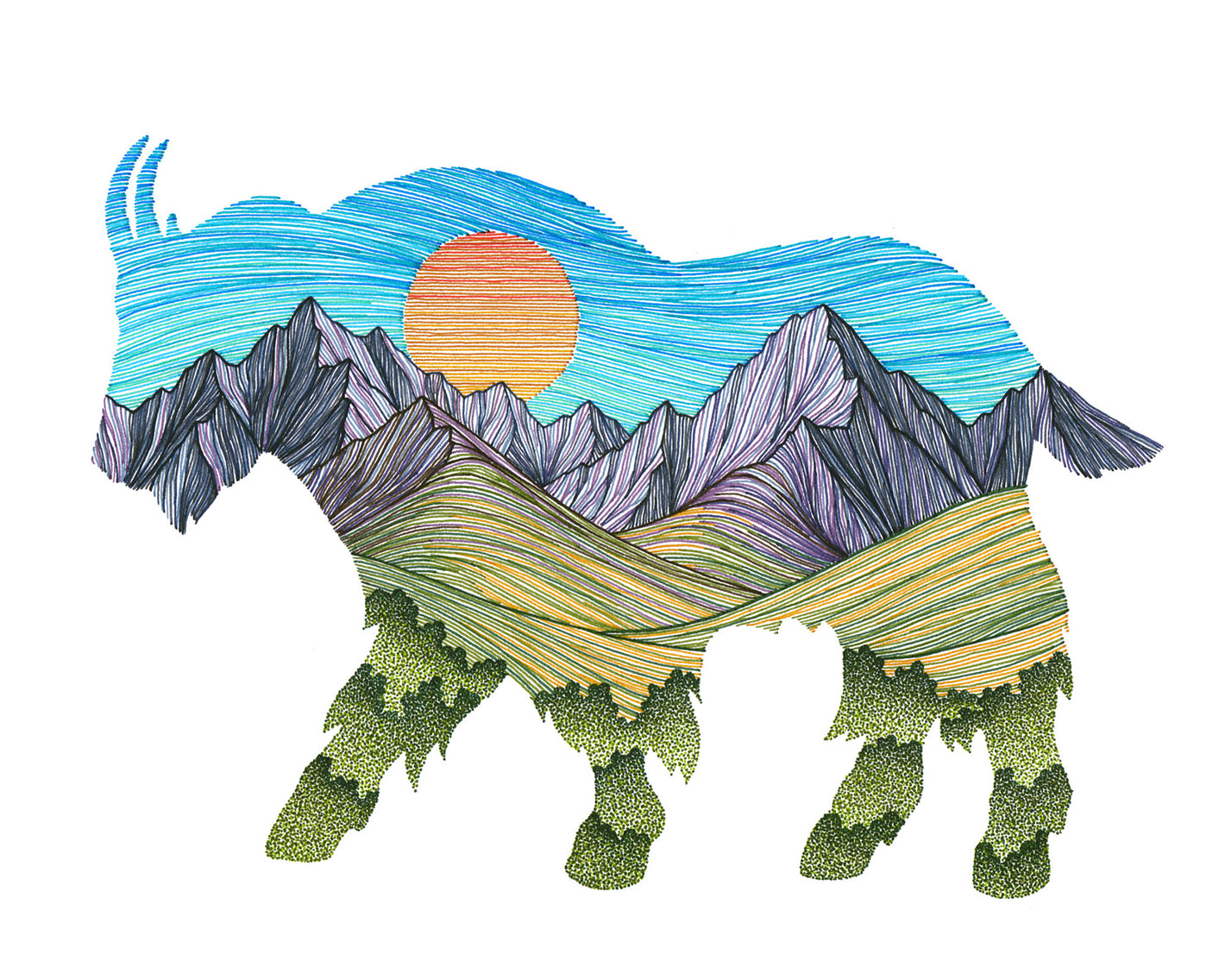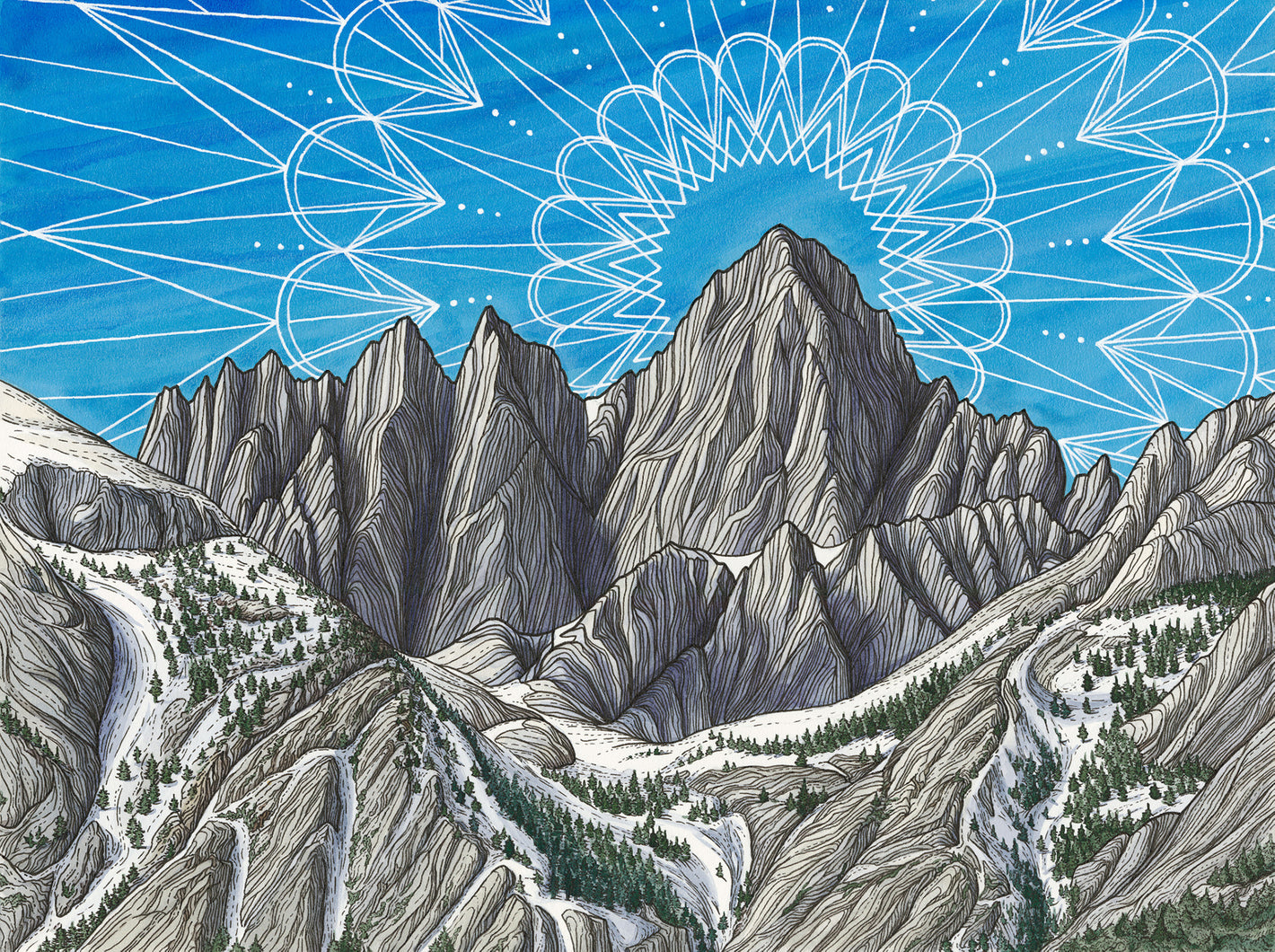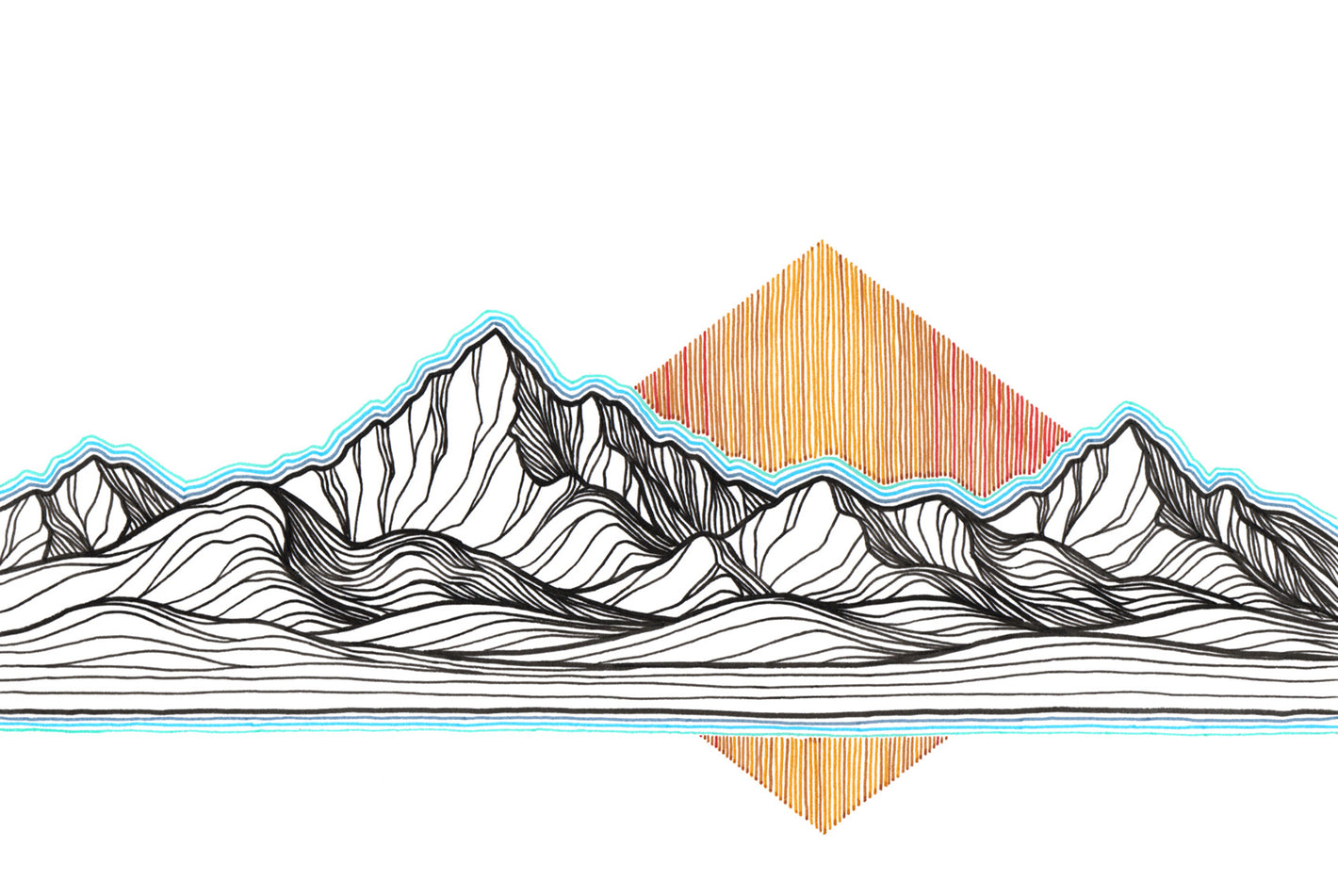Meet Lizzy Dalton (@lizzydaltonart)
Her art certainly takes viewers to new heights! Portland-based nature artist Lizzy Dalton @lizzydaltonart shares her love for the outdoors, lessons from art school and freelance advice in her interview for the latest Bee Paper blog.
What inspired you to start drawing mountainscapes?
The inspiration definitely grew from my rock-climbing experiences. I found myself looking at mountains and rock formations differently as a climber. Seeing certain places now brought memories of happy, challenging, or triumphant experiences, and inspired me to seek out new experiences. For my first few mountain paintings, my goal was to take some of the iconic peaks that so many climbers know and love, and try to capture these feelings. But I’ve since found that many people, not just climbers, feel a connection to these landscapes. Since then, I’ve continued to explore various ways of depicting mountains and landscapes, playing with technique and composition, and attempting to capture what makes these places so magical to us.
Favorite mountain to draw and why?
I don’t know about a specific peak, but my favorite mountains to paint are probably those in the Patagonia region of South America. They’re super steep and rocky, and many of them don’t even look real! I find mountains like this to be most satisfying to draw, and the craggy forms lend themselves really well to my style of drawing with contour line. I also enjoy depicting mountains that are iconic and easily recognizable, as the ones in Patagonia often are. Depicting these types of mountains almost feels more like creating a portrait than a landscape.
You tell us that you are a lover of the outdoors, and a rock-climbing fanatic! You told us that you moved from New York state to the Pacific Northwest in 2015 to be closer to the nature that inspires your art. How does your passion for nature translate in your art?
I see so much magic and elegance in the natural world, and I try to capture some of that in my art. My experiences in the outdoors through activities like hiking and rock climbing are a big inspiration. These experiences in nature are often meditative, rejuvenating, and inspiring, and, in my art, I attempt to express some of this. I hope to capture things like feelings of peacefulness and balance, a sense of awe and wonderment, a desire to explore and discover.
You have a very unique style of drawing mountains that incorporates geometric patterns and flowing contour lines. Which artists have been most influential to your artistic style?
There are so many artists who have inspired me, it’s hard to pick just a few! Climber-artists like Jeremy Collins and Renan Ozturk definitely inspired me in terms of creating adventure-inspired images with pen and watercolor. A few other artists that I admire who focus on the outdoors or natural subjects include Nikki Frumkin, Rachel Pohl, Erik Abel, and Yellena James. I’m also inspired by several mid-century minimalist and expressionist painters that worked with geometric abstraction, including Agnes Martin, Sol LeWitt, and Frank Stella.
What is your secret to drawing such perfect line patterns for those geometric mountains?
Lots of practice! And drafting tools. For geometric shapes and patterns, I always sketch them out first in pencil using a ruler, compass, drafting triangle, and/or protractor. Depending on the media I’m working in and how complex the overall design is, I’ll either sketch my lines lightly on the final paper, or sketch on a separate piece of paper then transfer the geometric design to the final paper using a lightbox or transfer paper. But I never use a ruler for the final inked lines; I just follow my pencil lines as closely as possible with the pen. I find that drawing lines this way, so that they aren’t exactly perfect, gives them more character and energy than ruler-drawn lines.
Favorite Bee Paper products and why?
Lately I’ve been loving the Premium Recycled Sketch Paper! Working with ink means there’s not a lot of room to edit after a piece is started, so my process involves a lot of planning, sketching, and re-drawing before taking pen to paper on the final piece. This means I tend to go through a lot of sketchbook paper! Having a sketchbook that’s reasonably priced and made of recycled paper is great for somebody like me.
As a graduate of Wesleyan University who majored in Studio Art, what is something you have learned during your time in art education that you would have never learned otherwise?
I didn’t make a significant amount of art for the first few years after graduating. When I did start making art again, it looked so different from what I was making in college; it felt like my college work wasn’t relevant to me anymore. Recently, I went back and read the two papers I wrote about my painting thesis, and it struck me how many of the concepts and themes behind my thesis still motivate my work today. My college professors taught me lot about the technical side of art - structure, color, light, composition, etc., which has definitely helped me in my art-making. But a lot of those concepts can be learned through YouTube videos. I think learning about the conceptual side of art was the most important thing I gained from getting a college degree in art. Even though my art today is so different from what I was making in college, I’m still building on a lot of the concepts and themes my college professors helped me develop.
What has been the greatest challenge you have faced during your artistic journey and how did you overcome it or plan to overcome it?
For me, it’s definitely finding the balance of being able to support myself financially, while having enough time and energy to create art. Working a day job means financial security, but little to no time or energy to make art. Not having a full-time job leaves more time to create, but usually means I’m struggling to pay bills every month, and that stress also makes it difficult for me to be creative. I can’t say that I’ve found a balance that works. Right now, I have no day job and have been focusing solely on my art career. I’ll be honest, making ends meet hasn’t been easy! My plan is to keep working on marketing myself and finding new income opportunities with my art, and, hopefully, soon I’ll be able to support myself comfortably with art alone.
What is the main message you want viewers to receive from your art?
I hope that my work will allow viewers to feel the beauty and magic that exists in the natural world. I hope that others who love to spend time in the outdoors will identify with my art; it will allow them to recall emotions of their experiences in the outdoors and inspire them to continue to explore and seek out adventure. I also hope that my depictions of the natural world will inspire action to preserve and protect our wild spaces.
Do you have any advice for artists wanting to do freelance work?
I think most important is getting your work out there! Instagram has been huge for me in terms of freelance work; the majority of projects I’ve done so far have come from people or companies who found my work on Instagram. I also think that having a specific theme or specialty helps a lot in finding freelance work. For me at least, focusing on climbing-inspired art has led to many opportunities in the climbing community and outdoor industry. It’s a lot easier to make a name for yourself in a small and specific community rather than the huge and general world of “art”, and if it’s something you’re genuinely passionate about it lends a lot more credibility to your art. Finally, don’t undervalue your art! Be realistic about the amount of time and materials you put into your art, and don’t forget to consider how much value a company is getting out of your art when you negotiate a price.
Follow Lizzy!
Instagram: @lizzydaltonart Facebook: Lizzy Dalton Art Website: lizzydaltonart.com Shop: shop.lizzydaltonart.com





